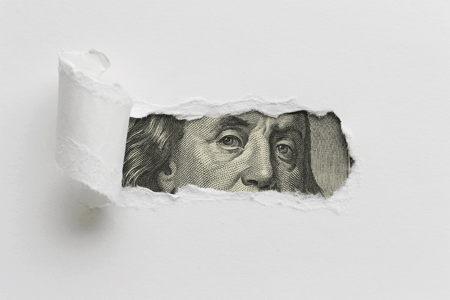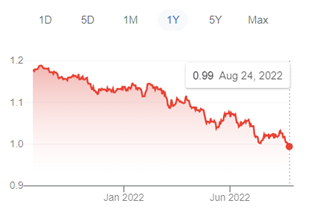As the Advantexe team spends the last few weeks of the summer getting ready for an extremely busy fall delivering our Business Acumen programs we are putting the finishing touches on the base conditions and models of the digital business simulations that will drive the programs.
extremely busy fall delivering our Business Acumen programs we are putting the finishing touches on the base conditions and models of the digital business simulations that will drive the programs.
One of the most common questions and challenges our clients continue to face is the impact of inflation on foreign exchange factors on business results. We typically explain a classic business model where exchange rates are determined by the demand for different countries’ assets and by the production of different countries’ goods. Basically, it should come down to supply and demand, or more specifically, the economic variables such as population size, employment, consumption, production, and Gross Domestic Product (GDP) that are related to supply and demand.
Unfortunately, as we have seen by the recent round of corporate earnings calls, there is a big problem that many global companies are facing: These classic variables don’t ever really explain the shifts in exchange rates. As many very smart business professionals are discovering, the exchange rate issue seems to be disconnected from the classic business models and is difficult to explain.
So, if the supply and demand variables are not good indicators of currency fluctuation what is? I believe that answer lies in the chaos of the past two and a half years. Think about it…we’ve had a pandemic, a disputed election, a rampage on our Capital and Congress, global supply chain issues, rampant global inflation, the great resignation, a war in the Ukraine, and continued social unrest. But throughout all of the chaos, one thing has remained remarkedly stable; the strength of the United States Dollar. While demand for US products remained strong and grew, the stability of the dollar was way more attractive to businesses and governments around the world.
The Global Strength of the US Dollar
To start to make sense of things, it’s important to understand that U.S. Treasuries are generally seen as the safest investment in the world. As such, they are prized by investors meaning the U.S. government can pay lower interest rates on its bonds.
As a matter of fact, when the U.S government raises funds from foreign investors, its funding rate is usually from 0.2 percent to 1 percent lower than comparable funding rates from similar foreign governments. That difference, essentially the yield that investors are willing to forgo when they purchase U.S. Treasuries, is known as a “convenience yield.” You can think of it as the market value of the convenience and peace of mind that comes with investing in U.S. dollars as opposed to other weaker more volatile currencies.
The important thing to understand is that because the dollar is the safest asset in the world, it can easily be traded or exchanged whenever the owner wants.
Speaking of being traded or exchanged, taking a look at the relationship of the Euro to the dollar tells the entire story. As of today, the Euro is exactly equal to the dollar:

This steady decline is directly attributable to the strength of the dollar in troubled times. The questions on the mind of all business leaders are, what happens next? Will this trend continue? Will it level out? What should we do?
It is my opinion that we are going to be on the same trajectory for at least the next 6-8 months.
The reasons I believe this to be the case are because inflation is not slowing down, the supply chain is still badly disrupted, and there is a strong chance that another variation of COVID will impact the world this fall and winter.
If you are part of a global company, there should be some genuine worry as the local currency will continue to decline against the strength of the dollar. That means your company is going to need to be 10-15% more productive just to make up for the impact of foreign exchange on final profits.




